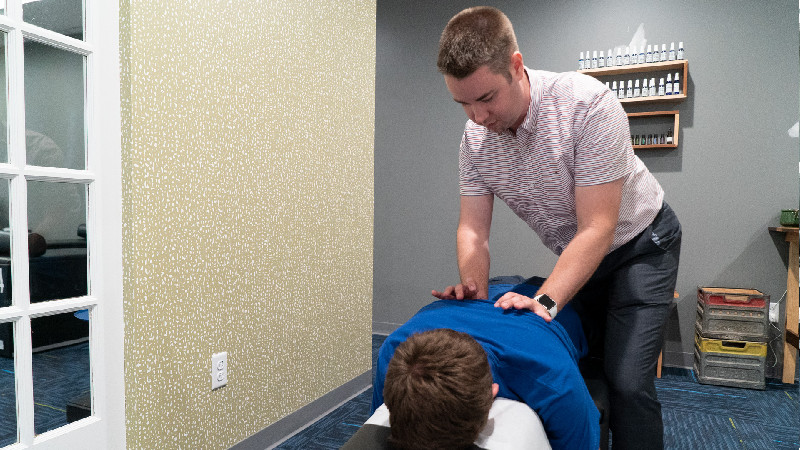Back pain is among the most common complaints in adults, often stemming from one overlooked issue—poor posture. Whether you’re sitting at a desk all day, hunched over a phone, or standing for long hours with uneven weight distribution, posture plays a key role in spinal health. Over time, slouching or misalignment can lead to chronic pain, restricted movement, and even nerve irritation.
One of the most effective, drug-free solutions to this problem is chiropractic care. By working with a licensed chiropractor, individuals can receive personalized posture assessments and targeted back pain treatment that focuses on the root cause of discomfort rather than masking the symptoms. Below are some chiropractor-approved posture correction tips and insights into how posture directly affects your spine and overall well-being.
The Link Between Poor Posture and Back Pain
Your spine is designed to support your body in a neutral, upright position. When you slouch or lean forward repeatedly, you place stress on muscles, ligaments, and joints, forcing your spine out of alignment. Over time, this can lead to:
- Muscle fatigue and strain
- Compressed discs or vertebrae
- Pinched nerves
- Decreased lung capacity and circulation
- Tension headaches and neck stiffness
What starts as minor discomfort can progress into chronic conditions that limit physical activity and reduce quality of life. By correcting posture early and consistently, many of these issues can be avoided—or at least greatly reduced.
1. Set Up an Ergonomic Workstation
Most posture problems originate in the workplace. Long hours in front of a computer can encourage slouching, forward head posture, and rounded shoulders.
To improve posture while sitting:
- Position your monitor at eye level to avoid craning your neck
- Keep feet flat on the floor or a footrest
- Adjust chair height so hips and knees are at a 90-degree angle
- Use lumbar support to maintain the natural curve of your lower back
- Avoid leaning forward—bring the screen closer if needed
Taking regular breaks to stretch or stand is also essential. Try setting a timer to move every 30–60 minutes to prevent stiffness and fatigue.
2. Strengthen Core Muscles
Strong core muscles support the spine and promote proper posture. Weak abdominal or pelvic muscles can shift your center of gravity and place added strain on the back.
Incorporate exercises such as:
- Planks
- Bridges
- Bird-dogs
- Wall sits
- Abdominal bracing techniques
A chiropractor may recommend specific exercises based on your posture assessment. These movements not only support good alignment but also improve balance, coordination, and overall stability.
3. Practice Conscious Posture
Becoming aware of your posture throughout the day is one of the most powerful tools for change. Here are some helpful cues:
- Stand tall with your shoulders relaxed, not rounded
- Keep your chin parallel to the floor
- Align your ears over your shoulders, and shoulders over hips
- Distribute weight evenly between both feet
- Avoid locking your knees while standing
Frequent self-check-ins, especially when using phones or laptops, can train your body to recognize when it’s slipping into poor habits.
4. Limit Tech Neck and Screen Time Posture
Mobile devices are a major contributor to neck and upper back pain. The habit of looking down at phones—known as “tech neck”—places excessive strain on the cervical spine.
To prevent this:
- Hold your phone at eye level
- Use voice-to-text features to reduce texting time
- Avoid scrolling while lying in bed
- Stretch your neck and shoulders regularly
- Perform chin tucks to strengthen the front of your neck
Even small adjustments to your screen habits can make a big difference in how your neck and back feel by the end of the day.
5. Get Professional Chiropractic Support
Although self-care is valuable, a chiropractor provides in-depth expertise that can significantly enhance your posture correction efforts. Chiropractic care focuses on restoring spinal alignment, which can relieve nerve pressure, improve joint mobility, and reduce chronic pain caused by poor posture.
Common techniques include:
- Spinal adjustments to correct alignment
- Muscle release therapy to ease tension
- Posture analysis and recommendations
- Customized stretching and strengthening plans
- Advice on ergonomics and lifestyle modifications
Consistent care and regular check-ins with a trusted partner can help maintain results and prevent future setbacks.
6. Incorporate Posture-Friendly Habits into Your Day
Lasting improvements come from habit change. Along with ergonomics and exercise, consider adding these habits to your routine:
- Wear supportive footwear that promotes proper alignment
- Avoid sitting cross-legged, which can twist the spine
- Use a backpack with two straps to distribute weight evenly
- Sleep on a medium-firm mattress that supports the spine’s natural curve
- Stretch after waking and before bed to loosen stiff muscles
These small steps add up and can help reinforce a posture-conscious lifestyle.
Final Thoughts
Posture isn’t just about how you look—it’s about how you feel. Over time, poor alignment can contribute to a wide range of physical issues, especially persistent back pain. The good news is that posture can be corrected with consistent effort and the right guidance.
Chiropractic care plays an important role in that journey. By combining spinal adjustments with practical advice and movement strategies, a chiropractor can help you build a healthier, pain-free foundation for daily life.
If you’re ready to take the next step toward better posture and long-term comfort, reach out to a trusted partner to begin your path to spinal wellness.


